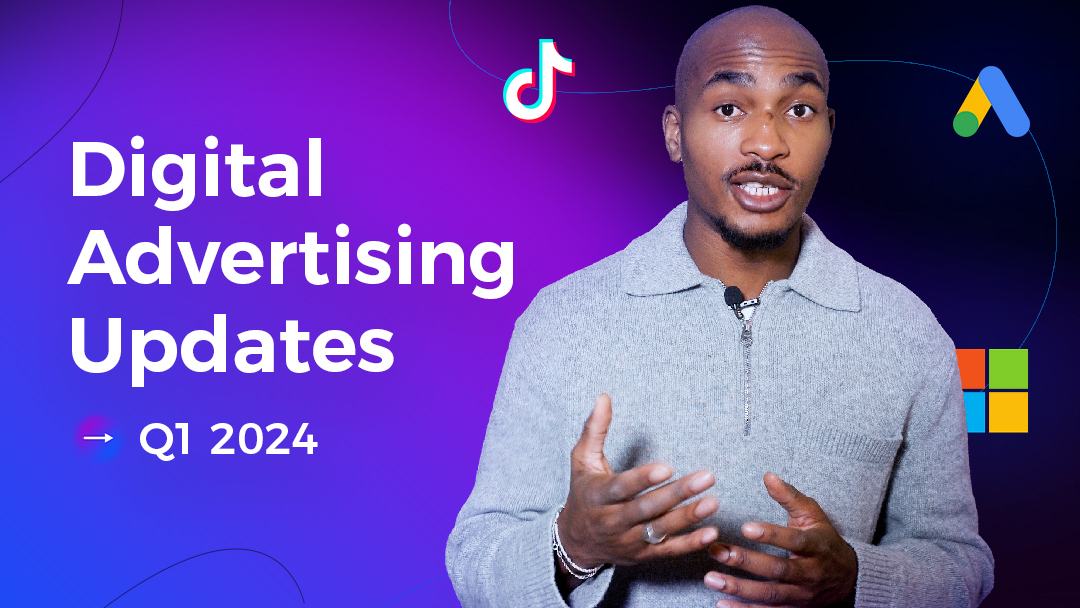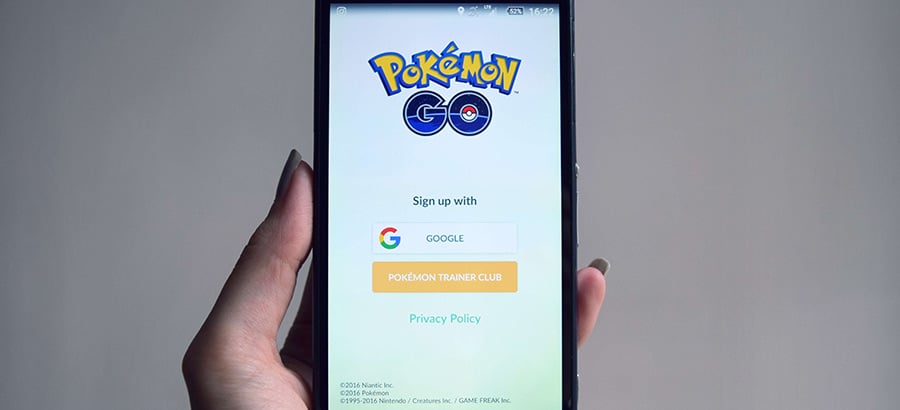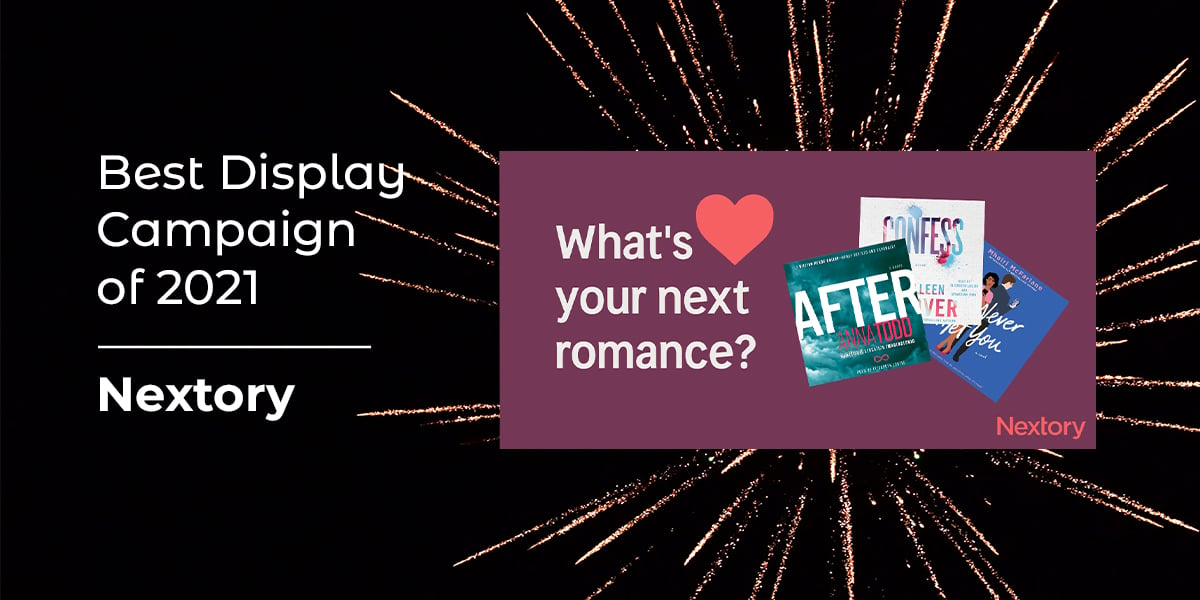Hello, and welcome back to Bannerflow Insider where we explore the cutting-edge developments in the digital marketing landscape. In this blog, we will go through some of the updates to digital advertising platforms that marketers need to consider for the new year.
In 2023, the buzz was all about Generative AI, and in 2024, major players continue to embrace AI technology to enhance advertising and boost ROI for marketers.
Let's dive into these updates to see how they can help you with your digital advertising efforts in 2024.
Google has traditionally commanded a large amount of market share in advertising, at its peak the global giant commanded around 35% of the market with Meta being its largest competitor, however towards the end of 2022, it was reported that this figure was dipping with the combined share dropping below 50% for the first time since 2014. In response to this and to regain lost market share, Google has introduced several updates this year to make the platform more attractive to marketers and claw back some of those ad dollars.
- Performance Max gets an AI Update
Performance Max, often referred to as PMax, has gained significant prominence within the realm of digital advertising, particularly in recent years. However, given the increasing influence of AI and machine learning, it has become increasingly evident that ignoring Performance Max is not a viable option for advertisers in 2024.
Performance Max, or PMax, automates ad creation by generating ads from advertiser inputs, similar to responsive search and display ads, with a central focus on specific conversion goals at the campaign level. PMax operates through machine learning models that optimise bids and placements in real-time, facilitated by Smart Bidding within Google Ads. Google's AI considers factors like audience targeting, creatives, budget allocation, bidding strategies, and attribution models to refine PMax campaigns.
In summary, Performance Max is a powerful tool in the arsenal of digital advertisers. It harnesses AI and machine learning to automate campaign management, optimise ad placements, and enhance overall conversion performance across Google's extensive ecosystem of platforms. Understanding its core principles and benefits can empower advertisers to leverage PMax effectively to achieve their marketing objectives
- Google First-Party Data Manager
Google Ads is introducing a new tool, Google Ads Data Manager, designed to streamline the management of first-party data for businesses. This tool enables marketers to efficiently analyse and utilise consented first-party data from various sources, all within a privacy-conscious framework.
Initially, it will be available in Google Ads, simplifying the use of enhanced conversions and customer matches. Over the next few months and years, it will expand to other ad products. Prioritising first-party data is essential for optimising campaign success, and Google Ads Data Manager makes it easier to integrate this data into your marketing strategy, ultimately boosting revenue, leads, and overall business outcomes.
One of the key features of Google Ads Data Manager is its ability to connect with multiple data sources, including customer relationship management (CRM), customer data platforms (CDPs), marketing technologies like Shopify Audiences, and cloud-based enterprise data storage systems like Lytics.
This tool is set to become generally available in Google Ads in early 2024. Kamal Janardhan, Google’s Senior Director of Product Management: Measurement, emphasises the importance of a first-party data strategy and notes that less than a third of marketers consistently integrate first-party data across channels.
Google Ads Data Manager simplifies this process, allowing analysts to create data connections and marketers to apply data for conversions and targeted ads through a collaborative interface. Importantly, it requires minimal or no coding knowledge, reducing the workload for using data in marketing while maintaining the privacy and consent-driven approach.
Microsoft Advertising
Microsoft Advertising has recently introduced a series of advanced generative AI tools, poised to transform the landscape of search and advertising. These AI-powered tools aim to create a more tailored and fluid experience for users while providing advertisers with superior targeting and optimisation capabilities. Let’s look at some of these updates and what they mean for marketers.
- Microsoft Introduces AI-powered Predictive Targeting
Microsoft has recently unveiled an innovative AI-powered advertising solution named "Predictive Targeting." This tool represents a significant advancement in the realm of digital advertising, harnessing the power of machine learning to analyse a plethora of data, including user behaviour, demographics, and historical trends.
Predictive Targeting operates by synthesising data from your existing advertisements and landing pages, enriched by Microsoft's distinct audience intelligence signals. This integration enables the tool to provide deep insights into the preferences, interests, and purchasing behaviours of your target audience.
Moreover, Microsoft’s sophisticated algorithms automatically display ads to the individuals most likely to engage, enhancing the likelihood of conversion.
Designed for ease of use, Predictive Targeting requires minimal effort from advertisers. It can be effortlessly activated or deactivated via a toggle in the ad group settings, thereby obviating the need for extensive demographic research or the development of complex targeting strategies.
This tool not only analyses consumer data in real-time but also facilitates the creation of highly personalised and tailored campaigns.
By leveraging AI, Microsoft predicts that advertisers can expect an average increase of 46% in conversion rates.
- Microsoft Compare and Decide Ads
Microsoft is launching a new ad format called Compare and Decide Ads, custom-designed for the Bing Chat experience. This format allows online consumers to compare products based on their selected criteria, covering areas such as retail, travel, and automotive. Set to launch as a closed beta in early 2024, Compare and Decide Ads aims to enhance user experience by providing personalised and relevant product comparisons, which will streamline the decision-making process for consumers. As this ad format becomes more prevalent, advertisers can expect improved customer engagement and higher conversion rates, solidifying Bing Chat as a valuable marketing and advertising platform.
- Microsoft Video and CTV ads
In anticipation of the burgeoning digital video consumption trend, where the average person is expected to spend 3.5 hours daily by 2024, Microsoft has strategically introduced a new video ad offering within its advertising platform. This innovative move is designed to align with the evolving media consumption habits, ensuring advertisers can effectively reach their audience in their preferred digital spaces.
The core appeal of Microsoft's Video and Connected TV (CTV) ads lies in their placement, as they are positioned where audiences are most engaged—on popular streaming platforms such as Max, Hulu, and Bloomberg, and renowned websites like MSN, Huffington Post, People, and the Wall Street Journal. This targeted approach is pivotal in a landscape where digital video viewing is rapidly becoming a primary form of media consumption.
This introduction by Microsoft is a calculated response to the projected growth in US programmatic video ad spending, which is expected to increase by a significant 30.2%, reaching $22.51 billion (equivalent to about $69 per person in the US) between 2023 and 2025, as reported by eMarketer.
Microsoft's entry into this market segment is a clear indication of its intent to capitalise on the increasing popularity of video advertising.
In summary, Microsoft's new video ad offering is not just a response to changing viewer habits but also a strategic move to harness the power of first-party data in enhancing audience targeting.
Amazon Advertising
Amazon's ad revenue for Q3 2023 reached $12.06 billion, marking a substantial 26.3% increase from the same period in 2022. This figure has seen Amazon’s share of U.S. search advertising stands grow to nearly 20%, marking it as a significant platform for advertising spend, especially for those selling or considering selling on Amazon.
Let's look into what new tools Amazon has added this year to improve its advertising offering.
- Amazon AI image creator
This year Amazon introduced a new tool that allows select advertisers to create AI-generated images for their ad campaigns. This tool enables advertisers to enhance plain product images by adding backgrounds or scenes. The significance lies in the potential for improved ad performance, with products featured in a "lifestyle scene" achieving 40% higher click-through rates, according to Amazon.
Here's how it works: Within the Amazon Ad Console, select your product and click "Generate." Amazon's generative AI will swiftly generate various "lifestyle and brand-themed images based on product details." Further customisation is possible through short text prompts or preset themes, and you can save multiple versions to test and optimize performance. Amazon allows up to five images in your Amazon ad, and selecting multiple images automatically creates a looping slideshow.
Initially, this AI-generated image tool is available to select advertisers, but Amazon plans to expand its availability gradually. Amazon emphasises that the tool is user-friendly and requires no technical expertise, catering to advertisers of all sizes. It serves as a solution for those lacking in-house creative capabilities or agency support while offering efficiency to larger brands in their creative development efforts.
This development aligns with Amazon's efforts to integrate generative AI capabilities into its ad platform, and it is one for advertisers who favour the platform to keep an eye on.
- Amazon Introduces Sponsored TV Ads
Amazon has launched Sponsored TV, a streaming TV advertising solution accessible to brands of all sizes, even those new to TV advertising. It comes with pre-packaged retail-aware, shoppable ad formats, providing marketers with the flexibility of Amazon Ads self-service ads without minimum spend requirements or upfront commitments.
Brands can easily engage with relevant viewers across streaming TV services like Twitch or Freevee, benefiting from Amazon's campaign modelling expertise. This launch enables real-time optimisation of campaigns, simplifying the complex process of purchasing programmatic TV ads.
Data shows that viewers spend an average of 2 hours a day on connected TV, making it a valuable addition to Amazon’s marketing mix.
According to eMarketer, advertisers using multiple video solutions saw a +44% incremental reach and a +73% purchase rate compared to those using only one solution. Getting started with Streaming TV is hassle-free, with no minimum spend requirements, daily budgets, and the option for evergreen campaigns.
Amazon's first-party insights help brands target audiences based on content interests and product categories on Amazon, making it easier to connect with viewers and reach new audiences through interactive ad formats with Sponsored TV.
TikTok
TikTok’s rise to prominence as one of the key social media platforms has led to changes in how users interact with social media platforms. The captivating and irresistible content, featured on the platform has seen TikTok amass a massive following, reshaping the way content is both enjoyed and crafted.
Here are some of the key updates for advertisers to have in mind going into 2024.
- TikTok Search Ad Toggle
In 2023, TikTok responded to the evolving demands of its user base by introducing a novel advertising placement designed to enhance brand visibility during user searches related to its products. Termed the "Search Ads Toggle," this new ad purchasing option empowers advertisers to target users actively seeking information about new products or brands by entering queries into TikTok's search bar.
Notably, the Search Ads Toggle is TikTok's inaugural ad placement allowing brands to focus on users engaged in searches linked to their businesses. It is important to underline that this ad format operates as an extension of an advertiser's TikTok video ad campaign and is not offered as a standalone advertising product.
Furthermore, TikTok assures brand safety by offering advertisers the flexibility to incorporate "Negative Keywords" into each ad group. This feature enables advertisers to prevent their ads from appearing alongside queries incongruent with their brand identity.
Based on internal trials conducted in July, TikTok claims that activating the Search Ads Toggle led to a 70% reduction in cost per action (CPA) for ad groups. This outcome was attributed to more efficient conversions stemming from this ad placement. TikTok had been conducting tests on these ads since the previous year.
The introduction of the new ad slot could potentially challenge Google's search ads business, as TikTok has increasingly become the starting point for searches among younger users. Google's Senior Vice President, Prabhakar Raghavan, acknowledged this shift, stating that nearly 40% of young individuals now initiate their search process on social apps like TikTok and Instagram rather than on Google.
TikTok has strategically embraced its role as a search engine for Gen Z, and brands need to recognise the evolving landscape in which young people seek information online. The performance of these search ads in comparison to traditional ad formats remains uncertain; however, given TikTok's influence on users' shopping behaviour, it is not surprising to anticipate more brands experimenting with this offering in the coming months.
- TikTok introduces new measures for improved ad-attribution
Recent studies have illuminated a critical issue plaguing TikTok's advertising campaigns: the underrepresentation of ad conversions due to limitations in last-click measurement. This discrepancy stems from the fact that many TikTok users primarily engage with the platform for entertainment purposes, rather than for immediate shopping. Consequently, even if they express interest in an ad, they may not necessarily take immediate action to purchase the product, leading to inaccurately attributed conversion credits.
TikTok has responded to this challenge by taking proactive steps to bolster its ad measurement capabilities. The platform is introducing Attribution Analytics within TikTok Ads Manager, offering advertisers a more comprehensive understanding of their ad performance. Furthermore, TikTok is placing a strategic emphasis on "self-attributing networks (SAN)" for its ad partners.
This innovative approach involves synchronising user IDs provided by advertisers with TikTok's conversion metrics.
In essence, the SAN mechanism operates as follows:
- Records each user ID and app code when the app is initiated.
- Evaluate ad activity concerning these user IDs.
- In cases of a match, ad interaction details are collaboratively shared.
The outcome? A more robust and holistic perspective on ad engagements. TikTok is confident in the efficacy of this solution and is actively transitioning all advertisers to adopt self-attribution practices throughout the year 2023. The impact on your advertising strategy will largely hinge on your existing arrangements and any affiliations with Mobile Measurement Partners (MMPs).
For most direct TikTok advertisers, this transition is expected to be seamless and will allow you to get a better understanding of ad performance.
- TikTok introduces AI-powered creative assistant
Generative AI integration has been a major focus for advertising platforms this past year and TikTok is no different. In September, TikTok rolled out its innovative “Creative Assistant”, a tool designed to streamline and enhance your advertising journey.
This assistant is more than just a tool—it's a guide, facilitating better ad creation by providing relevant examples, apt tools, and even generating sample ad scripts, all curated from TikTok’s Creative Center.
Key Features:
- Offers guidance on TikTok’s advertising best practices.
- Highlights exemplary ads relevant to your industry.
- Efficiently crafts ad scripts tailored to your needs.
Though some of these offerings are not entirely novel, Creative Assistant aims to optimise and simplify the user experience. For marketers who are struggling with how to include TikTok into their ad mix, this ability to learn from others and get guidance should make adoption much easier.
Conclusion
That concludes our deep dive into the key updates from digital advertising platforms for 2024. Stay tuned for more insights into the dynamic world of digital marketing.
Sign up to t for practical insights and tips to enhance your digital marketing efforts further.








